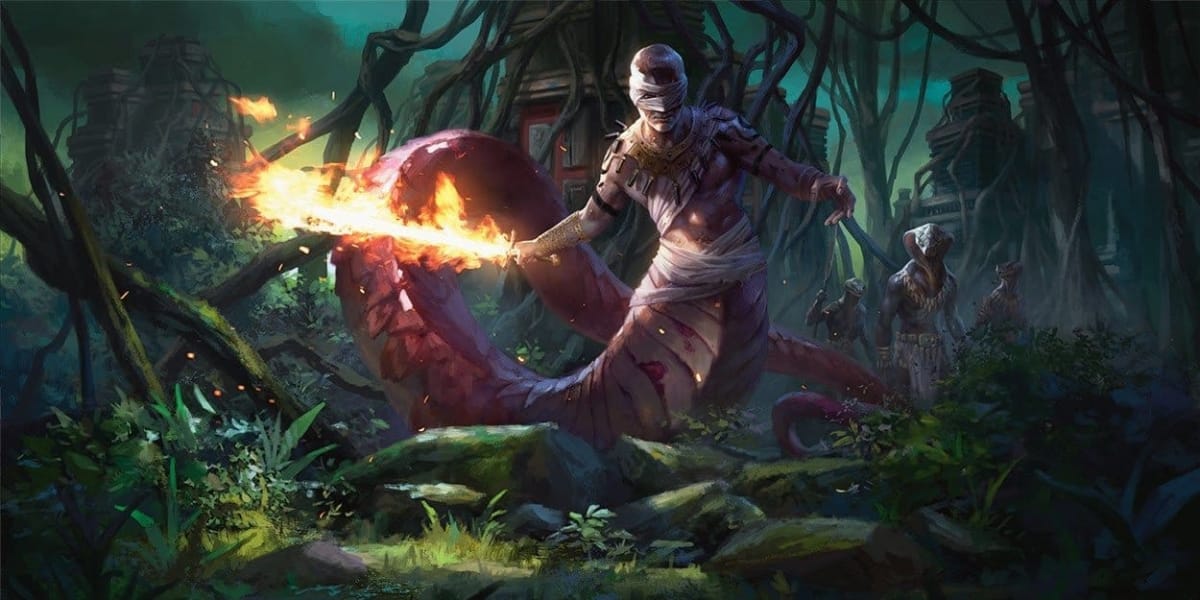Castle Ravenloft, the first game released in the Dungeons and Dragons (D&D) Adventure Board Game system, is the game that gets the most credit for bringing myself and my group into board gaming. The game was difficult, thematic, tense, and fun, yet simple enough that we were able to grasp the concepts and jump right in without too much effort. We played all of the missions in Castle Ravenloft in order, although there was no campaign system and no character progression from mission to mission. We quickly hopped on to Wrath of Ashardalon (the second game in the system) when it came out, although we grew a bit bored with it, instead opting to go for more advanced games with giant sprawling campaigns, like Descent 1st edition's Road to Legend. A few years have passed, and a few more games have been released in the D&D Adventure Board Game system including the newest, Tomb of Annihilation, and boy-oh-boy does it breath new life into this game system.
[gallery size="full" type="slideshow" ids="163219,163220"]
First thing's first, if you didn't like the previous games because of the core systems that the game was built upon, then you are almost certainly not going to like Tomb of Annihilation. Anyone who is familiar with the way any of the other games plays is going to be able to sit down with this game and play it almost immediately with nary a look at the rules. With that said, if you do like any of the previous games then, you are going to want to snag a copy of Tomb of Annihilation as soon as you can get your hot little hands on it, because it's the best game in the system so far (caveat: I have yet to play the previous release Temple of Elemental Evil). The Adventure Board Game system is inherently simple compared to other dungeon crawlers, but that simplicity works well here.
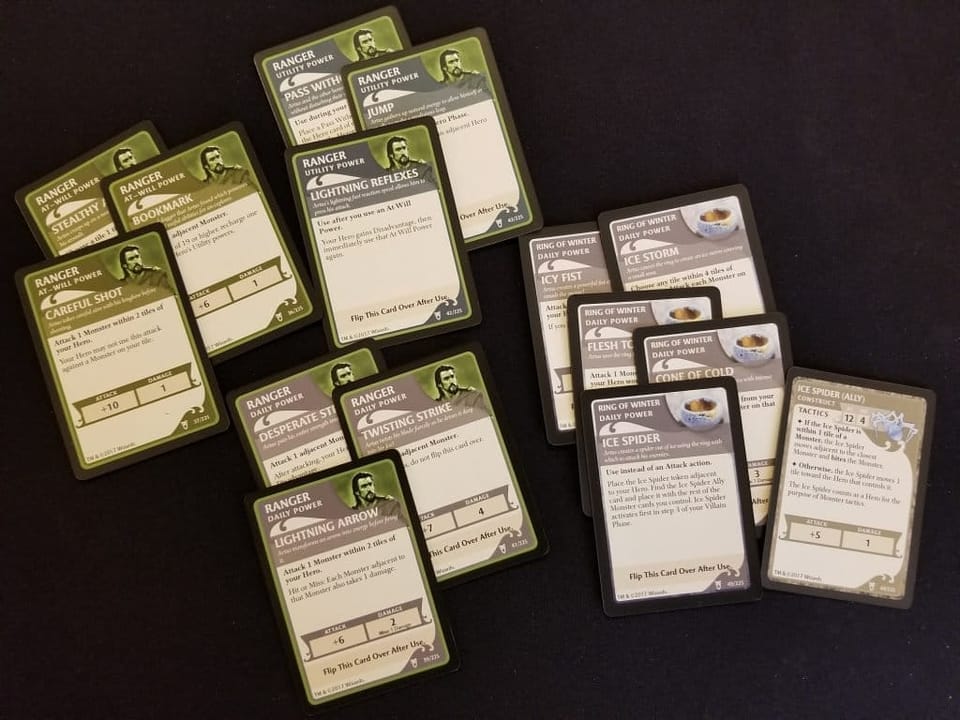
The core mechanics of this system involve exploring a mostly-randomly generated dungeon in order to solve one quest or another. The goal of each quest revolves around finding a certain tile that has been shuffled into the stack of dungeon tiles at a set interval, usually between the 9th and 12th tile, and then solving some problem on that tile (usually fighting a tough monster). The game punishes players who are not actively exploring by having them deal with an Encounter card at the end of their turn if they did not explore a new tile. Players who do explore are usually greeted by a new monster that appears in the room that they explored, and many of the tiles come with Encounter cards anyway. The monsters always get the drop on the players, because Exploration is the last thing a player can do on their turn, so the game system is constantly dishing out pain to the players before they have a chance to respond with their characters. Players have to figure out how to deal with bad situation after bad situation on their way to their goal while keeping themselves and their party members alive. It's as much puzzle and resource management as it is dungeon crawler or role playing game as the players need to balance their health against the need to press forward and determine which Encounters are bad enough to spend experience points to cancel versus which ones they can endure.
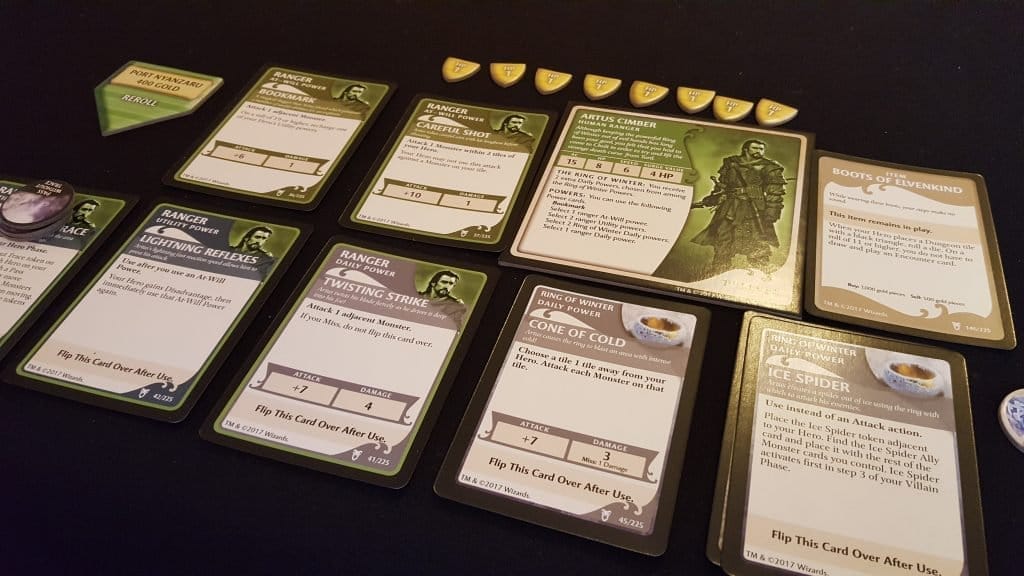
Tomb of Annihilation succeeds because of what it does with a system that is, on its surface anyway, inherently player-unfriendly. Instead of simply giving the players a new end-goal for each mission, and then having them trudge through the same dungeon fighting the same monsters and dealing with the same Encounters, this game structures everything around campaign play. Every mission is linked to the next thematically, they have varied goals, and together the missions tell an overarching story. Along the way, players are given better rewards for performing well on missions, and players keep what treasures and money the find from mission to mission in order to improve their characters and grow stronger. Between missions, players can visit towns and make purchases of gear and upgrades, and the towns themselves change as the players venture into ever more dangerous and less populous areas. The towns are nothing more than the items up for sale between each mission, but the fact that the inventory of items available to purchase changes as the story progresses really makes the town visits fit in with the theme of the game, even if they aren't thematically robust.
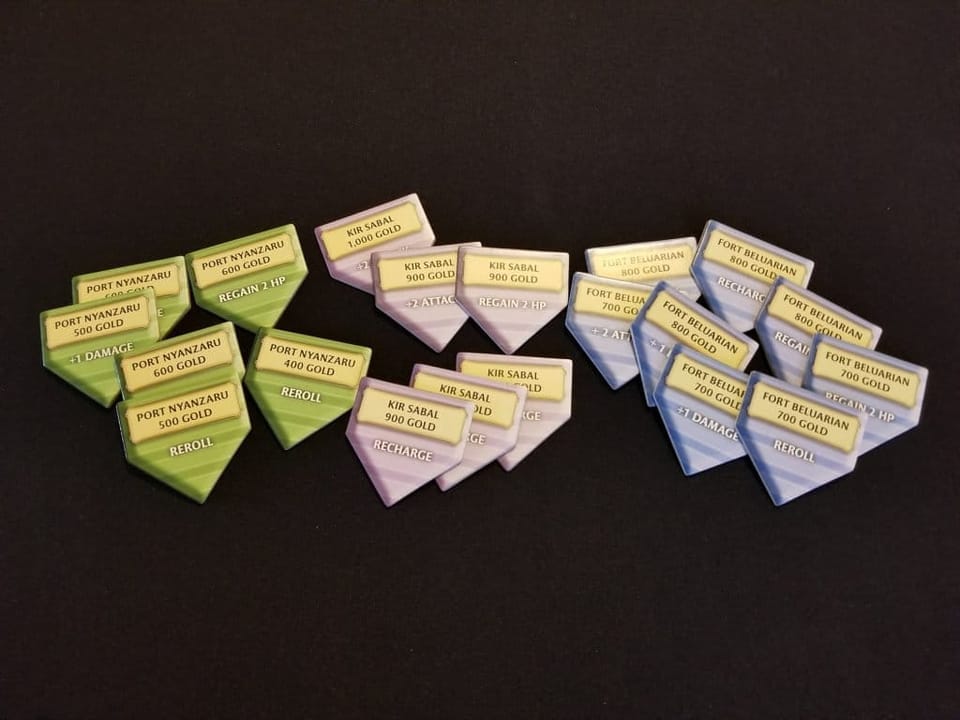
As in previous games in the system, players can only ever level their characters up to level 2, but players choose when to level up after a certain mission by paying to level up, and the Advancement Tokens that can be purchased, and the treasures that can be found and kept, provide the players with a significant power boost as the campaign unfolds. Thanks to the variety of Advancement Tokens that you can purchase, you have some say in how your character grows stronger, which provides a sense of ownership and attachment to your chosen character as you watch them grow mission to mission. Even though you continue to change your character over time, it's incredibly easy to track those changes, and so that paperwork between missions, if you put the game away, is very minor.
[gallery type="slideshow" size="full" ids="163211,163212"]
Even better than the character progression is the way that the game itself changes during the campaign. As you finish missions, the game instructs you to remove certain cards and tokens from the Encounter, Monster, Treasure, and Trap deck/tokens, and replace them with deadlier Traps, harsher Encounters and nastier Monsters. In previous games, you might fight a mini-boss once at the end of a mission and then never face them again. In Tomb of Annihilation, you add a regular Monster version of many of those bosses into the Monster deck, and while they aren't as powerful as their mini-boss versions, they are still a scary sight when they turn up. Many of the normal Monsters get replaced with souped-up versions as the game goes on as well, and some of the Monsters attack using the included Spell deck rather than having a set attack, which shakes things up and keep things unpredictable.
[gallery type="slideshow" size="full" ids="163213,163210"]
The campaign changes location after a number of missions, and the set of dungeon tiles used changes in keeping with the theme. The two sets of tiles aren't simply palette-swaps though, as they actually give the game a different feel. The jungle is teaming with monsters, and while there are traps to deal with, the monsters are your primary concern. The tomb tiles, on the other hand, have traps everywhere, and feature a much higher percentage of Encounter tiles. The mechanical differences between the tiles match the themes of those tiles wonderfully, and help to further reinforce the thematic and tonal shift of the campaign.
[gallery type="slideshow" size="full" ids="163208,163207"]
While I've been pretty upbeat about the game so far, it's not without a few hiccups, especially where difficulty is concerned. On the default difficulty the game does feel a touch too easy for my group. We didn't use a single healing surge during the thirteen missions of the campaign of Tomb of Annihilation while playing on standard difficulty. We came very close on a few occasions, but we managed to avoid it with well timed heals, and well planned damage distribution. With that being said, the difficulty curve felt like it would be probably be about right for players new to these games. If you are experienced with this game system already you may want to tweak a few things, such as limiting the number of Advancement tokens a player can have, or how many times you can use them in order make it more difficult if you prefer a higher level of challenge, although the game was enjoyable even though we never felt like we were stuck between a rock and a hard place. One of this system's strengths is in how easy the game's difficulty is to tweak to suit your tastes, especially if you have any of the other compatible games.
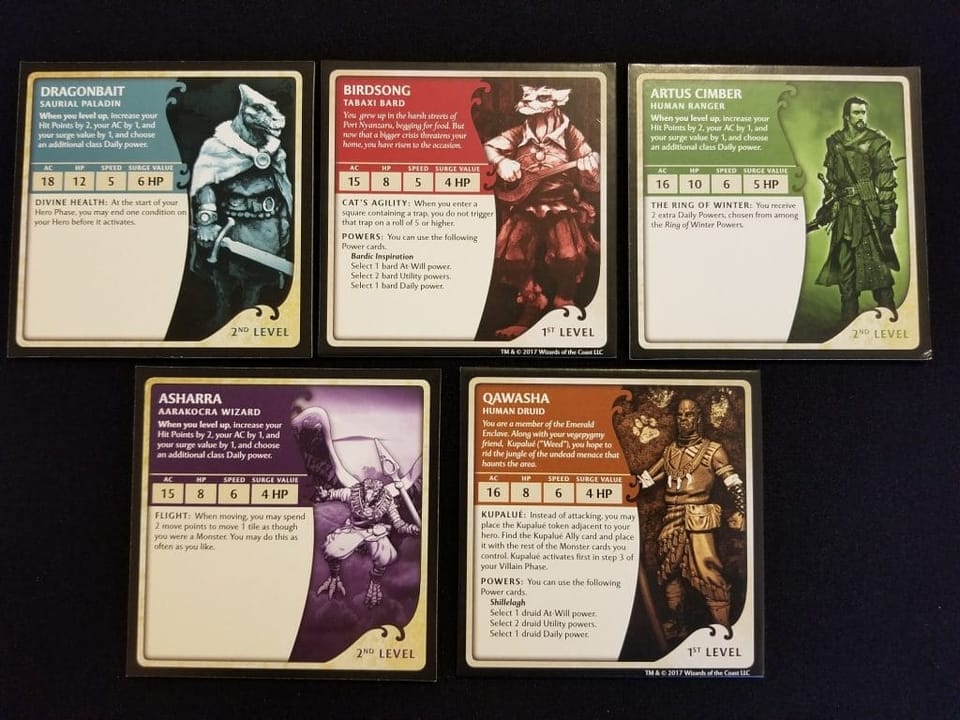
The five characters included in the game all feel unique, although the Human Ranger with his Ring of Winter is hands down more powerful than the others. The Ring of Winter provides an extra two Daily Powers to the Ranger, so simply not using that character, or having him forego the Ring of Winter would significantly increase the difficulty of the game without the need to tweak much else. The other characters aren't useless though even if they are initially less powerful; the Wizard can fly around the board rapidly and dish serious damage, the Paladin can soak up a ton of damage, the Bard can help the other heroes turn the tide of battle, and the Druid can shape-shift into three different animal forms to suit the task at hand. If you have a favorite character from any of the other games you could also use them instead.
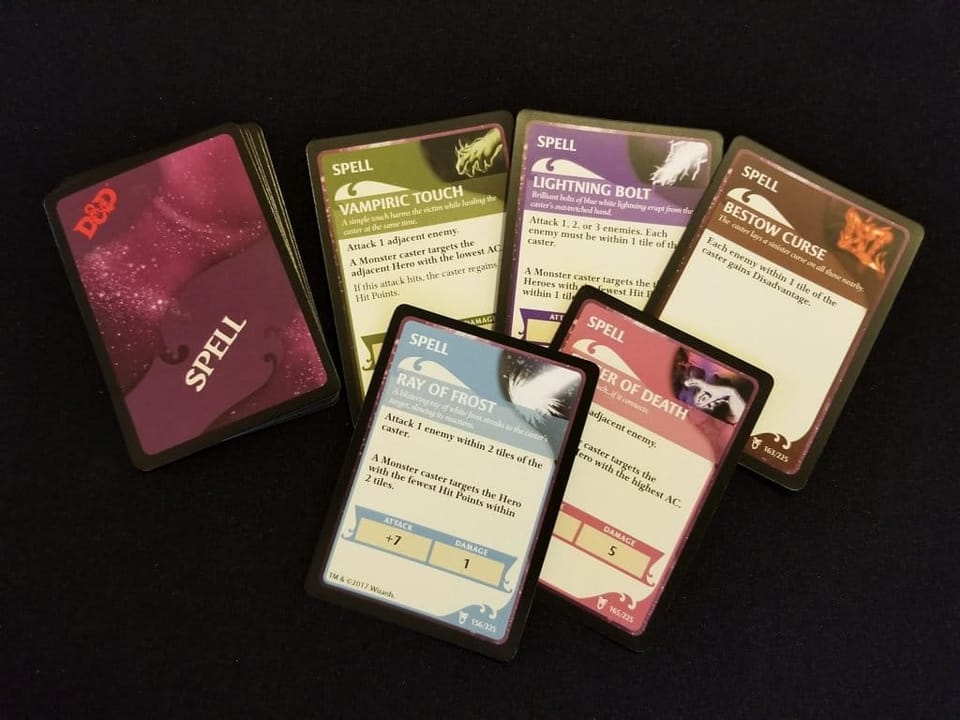
All told, Tomb of Annihilation is a great 'beer and pretzels' game, meaning it is easy to learn and play and never really gets too think-y or complex, but the campaign is engaging enough to keep player interest, and the character progression is satisfying in a way that makes players feel ownership over their chosen hero. The story isn't very deep, and the progression isn't going to let you alter your character on a granular level, but that's not what the game is trying to do. Tomb of Annihilation wants to tell a straightforward story using mechanics that are easy to understand while giving the players enough connection to the game to feel involved without bogging them down with excessive bookkeeping, and it succeeds at that goal. There probably isn't enough new here to change your mind about the D&D Adventure Board Game system if you don't like it, but if you do like this system, or if you haven't ever played it and want a great place to jump in, then Tomb of Annihilation is easy to recommend.
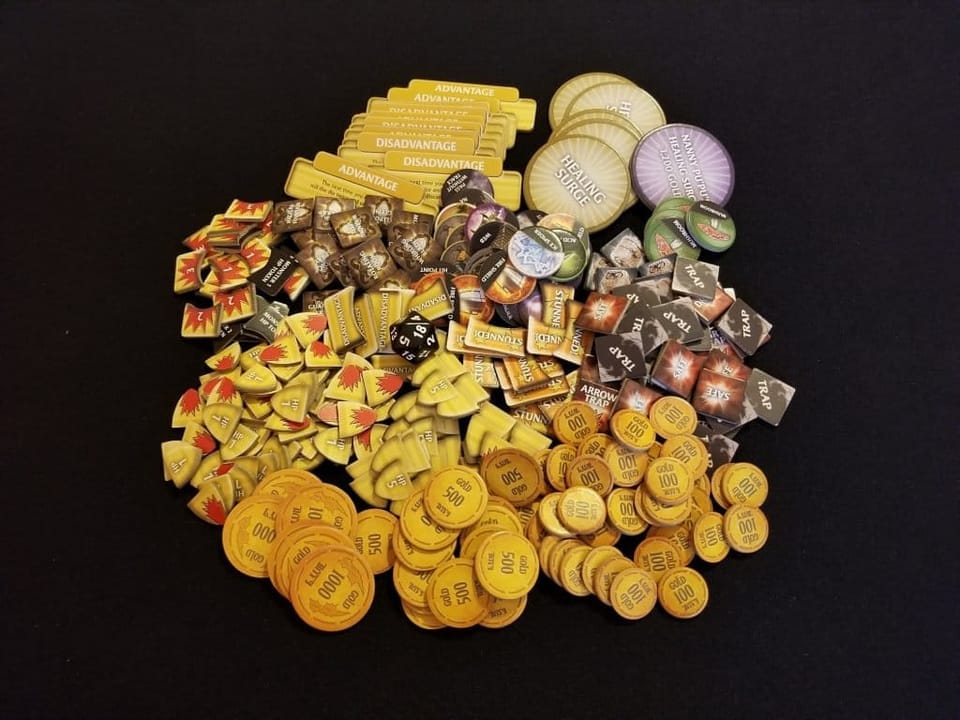
A note on compatibility: One of the biggest draws for the D&D Adventure Board Game system is the sheer volume of content available for it at this point. Tomb of Annihilation is the fifth game in the system, and nearly everything from Temple of Elemental Evil, Legend of Drizzt, Wrath of Ashardalon and Castle Ravenloft is compatible with it. Additionally, the Dungeon Command series of games has components that can be used with these games to expand the experience, so you will never be hurting for content if you invest in this system.
A note on “chrome”: I was sent the Premium Edition of Tomb of Annihilation for this review. The Premium Edition comes with pre-painted miniatures while the standard edition comes with unpainted minis. The miniature quality is on par with the other games in the system, and the paint jobs range from simply 'okay' on the tiniest miniatures, to really solid on some of the more detailed minis. The price difference between the two versions is $80, which is fair considering that is actually less than I would charge someone to paint this many miniatures via commission, and the quality of the paint jobs is good enough that every mini looks good at arms length while playing. It always helps with theme and immersion when you are playing with painted miniatures, and it's nice to have the option to pick up a Premium Edition if you aren't a painter yourself.
[gallery size="full" type="slideshow" ids="163215,163214"]
The rest of the components are well built, and the dungeon tiles themselves are a step up over the bland, same-y tiles of some of the previous games, especially since there are two different sets of tiles in the game, one for the jungle missions, and one for the missions that take place indoors, and the number of traps you encounter throughout the game give you another physical feature to worry about on the tiles other than the tile shape, and where the monster spawns.
The cards themselves are incredibly bland, although that's a symptom of WizKids keeping the game compatible with the other games in the system, and even though it's kind of a bummer that the Treasure, Monsters and hero cards aren't prettier, the trade-off of keeping the game compatible with all of the other content in the system is well worth it.
The bottom line:
For the past few years, my other games in the D&D Adventure Board Game system have been gathering dust on my shelf. Castle Ravenloft was the game that really got my group into board gaming, but we moved on from this system into more complex, heavier dungeon crawl/cooperative games. Tomb of Annihilation has rekindled my love for this system with just a few small tweaks to the formula. While there probably isn't enough new here to make you a believer if you've tried this system and didn't like it, there is something refreshing about the campaign system in this game that rewards you with satisfying character progression while keeping bookkeeping to a minimum. As great as this game is on its own, the sheer volume of content for the Adventure Board Game system means that Tomb of Annihilation is the perfect place to get into these games if you haven't before, and this game is an awesome choice to get back into the system if you liked the first few games but wished that they included a better sense of character progression or more variety. I skipped over Temple of Elemental Evil, but knowing that it has a campaign structure similar to Tomb of Annihilation means that I'm almost certainly going to have to pick up a copy. The D&D Adventure Board Game system may be quite a bit simpler than some of the other big cooperative dungeon crawls out there, but Tomb of Annihilation has proven to me that these games still have a place on my table, not just gathering dust on my shelf.
Get this game if:
You enjoy other games in the D&D Adventure Board Game system.
You like campaign style games with persistent character progression.
You are newer to board gaming, and want a dungeon crawl that is easy to get in to that doesn't require a ton of bookkeeping.
Avoid this game if:
You dislike cooperative games.
You are looking for a full pen and paper D&D experience.
The copy of Tomb of Annihilation used for this review was provided by WizKids.
Review Summary
Tomb of Annihilation is a great cooperative dungeon crawl for anyone who enjoys campaign driven games with persistent character progression, but doesn't want to play something that requires much bookkeeping. The Encounter, Monster and Treasure decks change constantly throughout the campaign which keeps things interesting, and while it's probably too easy on the default setting the difficulty is very easy to tweak, especially if you have access to any of the other games in this system.
(Review Policy)Have a tip, or want to point out something we missed? Leave a Comment or e-mail us at tips@techraptor.net
